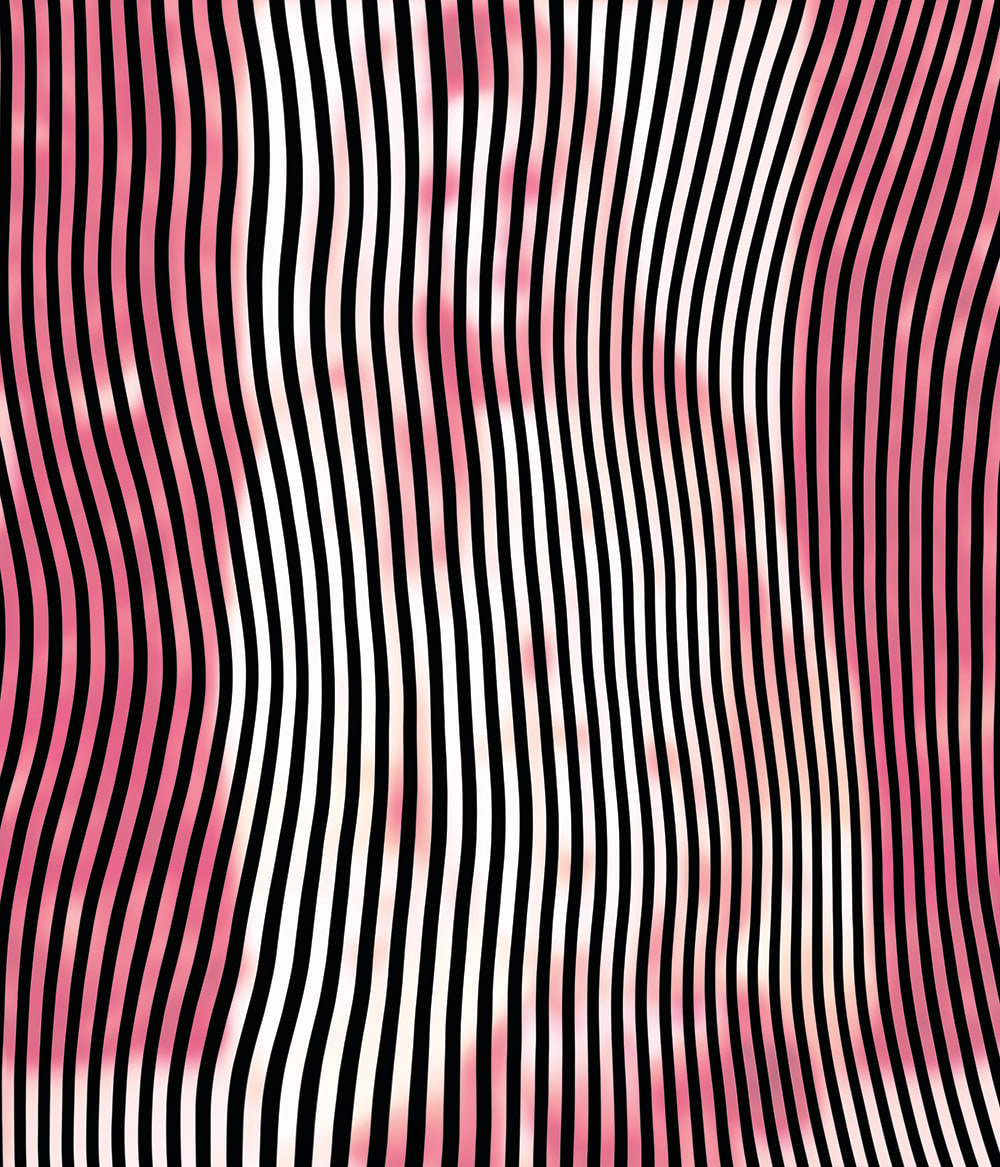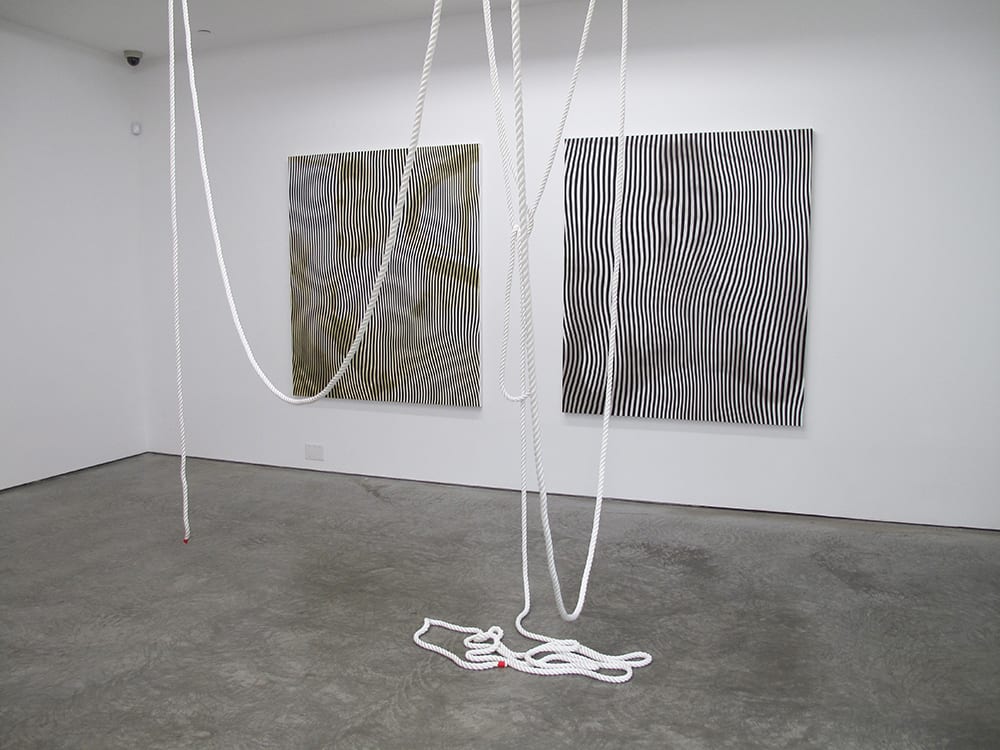"The late '60s mark the end of an innocence in this country." The tragic murder of film actress Sharon Tate still leaves a lasting impact.

Robert Lazzarini, O32, 2017, silk screen on canvas. Courtesy of the artist.
Artist Robert Lazzarini (BFA 1990 Fine Arts) is no stranger to confronting violence in his work. His muse for "Inflorescence," his recent exhibition of work at the De Buck Gallery in Manhattan, was famous in life, but is now best known for her infamously grisly death: Sharon Tate, the pregnant actress who, along with four others, was murdered in her Southern California home in 1969 by followers of Charles Manson.

Robert Lazzarini, O31, 2017, silk screen on canvas. Courtesy of the artist.
For Lazzarini, Tate was a central and tragic figure in a quintessential American story and transformative moment in our history. "The late '60s mark the end of an innocence in this country," he says, calling the brutality and senselessness—the "overkill"—of the Manson murders "a chilling punctuation" that concluded and called into question the entire Free Love era. "Plus, there's something completely random and irrational about her death. She was simply in the wrong place at the wrong time, which means that horror is potentially waiting for any of us."
"Inflorescence" was so named as a nod to the process of flowering, meant to stand in stark contrast with the subject matter of Tate's premature end. Appropriating images has long been part of Lazzarini's process, even in his sculptures, so using archival photographs of Tate—from her pregnancy leading up to her demise—was paramount to creating the work. "I've always been interested in the idea that something could simultaneously be itself and something else at the same time," he says. "The challenge is to take something that has a mutually agreed-upon meaning and re-contextualize it anew."
Through working with the images of Tate pregnant and happy, looking forward to the arrival of what would have been her first child, Lazzarini confronted his own fears as well. He and his wife were expecting their firstborn at the time, facing the worries and uncertainties that come with being new parents. "As an older parent, I think I was bracing myself for a potential miscarriage," he says. "It was definitely the thing I feared the most. Thankfully there were no problems, but I had a lot of anxiety about it. Being immersed in the events surrounding Tate and her baby's murder didn't help."

Robert Lazzarini, installation view of "Inflorescence," 2017. Courtesy of the artist.
Visually, "Inflorescence" explored the interplay between images and patterns and used op art methods to foil the stasis of two-dimensional works. The exhibition consisted primarily of multiple silk-screened paintings that presented photorealistic portraits of Tate overlaid with stark, waving graphic lines. Lazzarini used this image–pattern conflict as a way to emphasize the limitations of vision. As the viewer approached the works, the figurative elements retreated and the patterning came to the fore, producing an optical grating effect. Similarly, when the viewer's vantage to the works changed, the lines of the paintings would appear to oscillate.
Suspended throughout the gallery space were ¾-inch, three-strand white nylon ropes—the type used to tie up Tate during her murder—adding another, more physically interactive layer to the viewer's experience, and a grounding element to counter the disorienting and illusory effects of Lazzarini’s paintings.
In addition to the paintings and ropes, the exhibition also included a sculpture, based on a circa-1960s Hollywood Regency gold-toned wall decoration of dogwood branches in bloom—the show's lone true inflorescence, albeit a disturbingly altered one. "The sculpture is enlarged, out of scale and distorted to create a tangled oddity," he says. "The idea was to conjure something from a home in that era." Entitled creepy crawl, the work takes its name for the ritualized acts performed by the Manson family before the murders, wherein they would enter homes at night and rearrange their objects, and addresses the ragtag cult's infringement upon the rarefied spaces belonging to the Hollywood elite.

Robert Lazzarini, creepy crawl, 2017, polymer, gold tone, paint. Courtesy of the artist.
When he first started work on "Inflorescence," Lazzarini was attracted to the themes of violence and lost innocence in Tate's story, but as he dug deeper, his feelings shifted—a change he partly attributes to the birth of his daughter. "Something strange happened," he says. "It was never a problem before, but all of a sudden it became more difficult for me to see graphic violence. It was like a switch went off, a switch that attached me to things in a different way."
Lazzarini's work has been featured in numerous solo and group exhibitions domestically and internationally and is included in the permanent collections of the Whitney Museum of American Art, New York; Walker Art Center, Minneapolis; and the Carnegie Museum of Art, Pittsburgh; among others. For more information, visit robertlazzarini.com.
A version of this article appears in the spring 2018 issue of the Visual Arts Journal.

